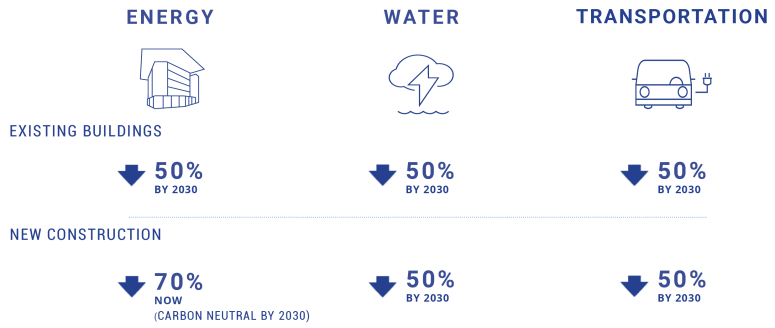About Seattle 2030 District
The Seattle 2030 District works to break down market barriers to building efficiency in an effort to make Seattle and the surrounding communities more sustainable, and contribute to the region’s environmental resilience, livability, and affordability.
We are a membership organization of real estate owners, architects, engineers, contractors, and community partners that bridges the gap between the private and public sector to reduce the environmental impacts of buildings in Seattle. Our 140 members have made the commitment to significantly reduce water and energy use, as well as pollution from stormwater and carbon emissions from transportation by the year 2030.
With Architecture 2030 Challenge for Planning providing our performance goals, we seek to develop realistic, measurable, and innovative strategies to reduce adverse impacts of on-site construction and operations. We work with stakeholders managing over 250 buildings within our District boundary to create partnerships, implement community-level solutions, and advocate for policies that will make Seattle a global model for sustainability.
District Goals
Existing Buildings
- Energy Use: A minimum of 20% reduction below the National median by 2020 with incremental targets, reaching a 50% reduction by 2030.
- Water Use: Manage the combination of annual stormwater runoff and potable water use by 50% below the District baseline by 2030, with incremental targets of 20% by 2020, 35% by 2025, reaching 50% by 2030.
- CO2e of Auto and Freight: A minimum of 20% reduction below the current District average by 2020 with incremental targets, reaching a 50% reduction by 2030.
New Construction
- Energy Use: An immediate 70% reduction below the National median with incremental targets, reaching carbon neutral by 2030.
- Water Use: Immediately manage the combination of annual stormwater runoff and potable water use by 50% below the District baseline.
- CO2e of Auto and Freight: An immediate 50% reduction below the current District average.
District Boundary
Our District boundary includes the downtown core and surrounding areas (in green) that include: Uptown, South Lake Union, Capitol Hill, Belltown, the Waterfront, Denny Triangle, First Hill, Pioneer Square, the International District, and South of Downtown (SODO).


